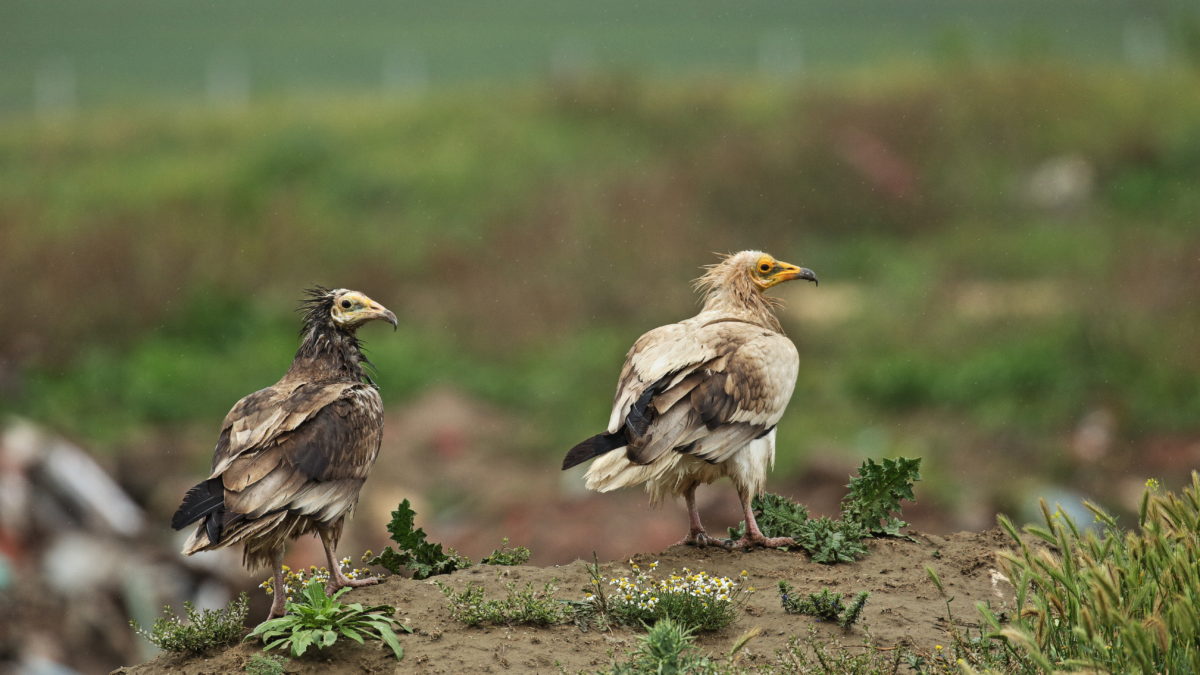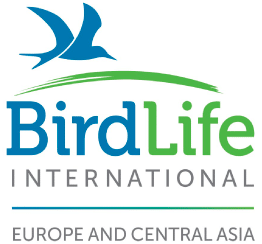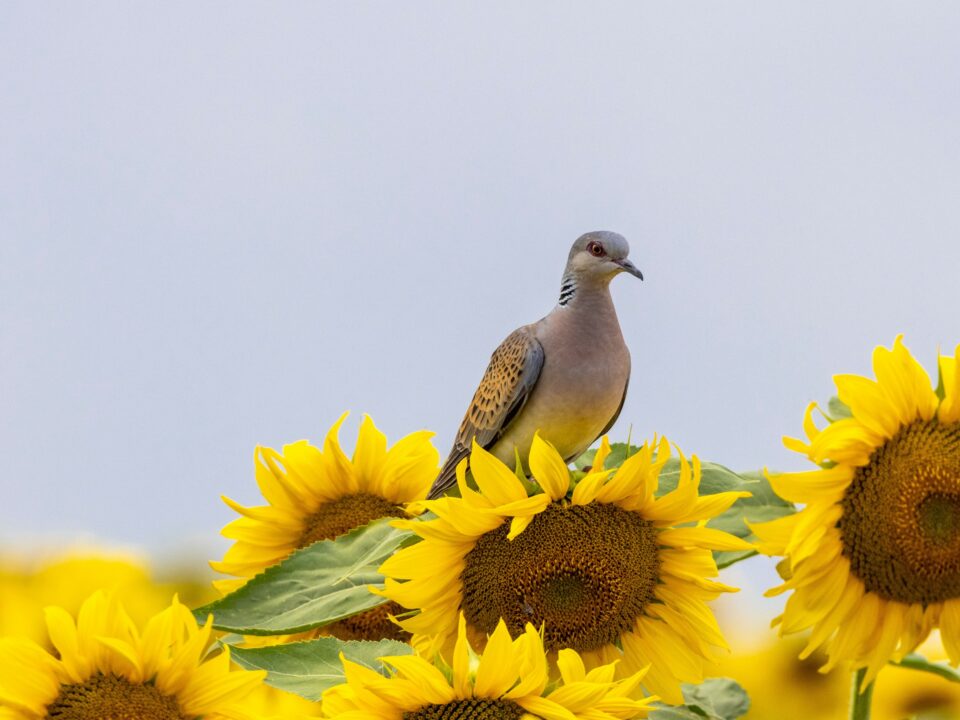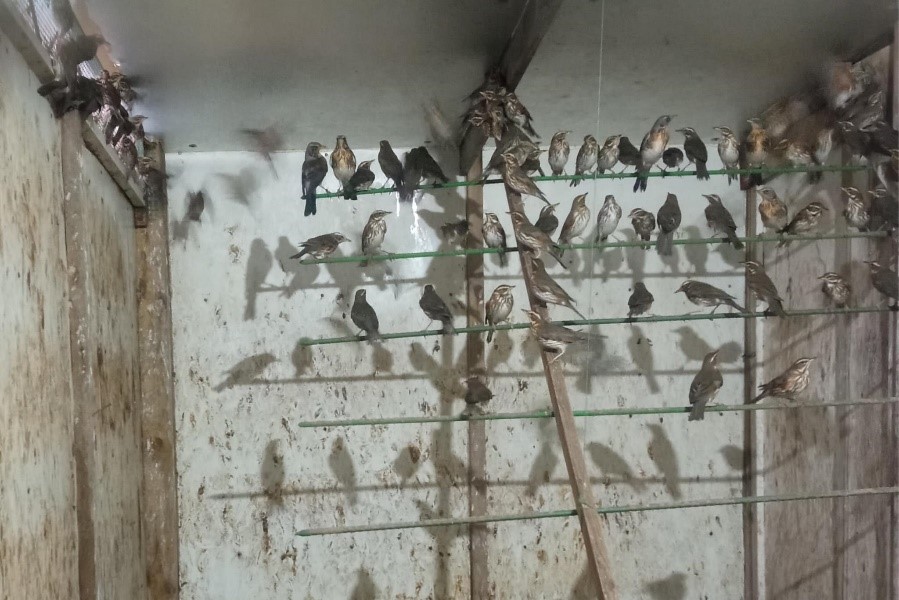
Egyptian vultures ©Emir Özay, DogaDernegi
Sara and Tobia: two captive-bred Egyptian vultures enduring the challenges of the Mediterranean flyway
Two captive-bred Egyptian vultures, Sara and Tobia, were released in Italy in 2015 and have not been back since. Until now! Both birds travelled to Africa after their release, and we have been impatiently anticipating their return to Italy for the past few years. In May 2019, they finally felt brave enough and crossed the Mediterranean Sea to come back to Italy.
Sara and Tobia
Sara and Tobia were born at the CERM Endangered Raptors Centre (Italy) in 2015 and were released in 2015 by the CERM Association on behalf of the Italian Ministry for the Environment. This was part of an experimental release programme led by the CERM, in collaboration with the Vulture Conservation Foundation (VCF) and the Egyptian vulture Captive Breeding Network. The project tests procedures to get crucial data on the feasibility and relevance of captive-breeding and reintroduction projects with this species. They were both fitted with GPS transmitters before being released, and the VCF closely followed their progress.
Sara
Sara was released in Puglia, Italy on August 16th 2015. In less than ten days, Sara had moved away from the release site and after 28 days had reached Niger after travelling 3,980km. Sara stayed in Niger for the majority of the time, wintering there. Fast-forward four years and Sara returned to Italy! On May 2nd, Sara flew to Sicily and then wandered through Central and Southern Italy, travelling more than 2,400km before stopping in Basilicata, which is close to the release site. Basilicata is, together with Calabria, the only region of the Italian peninsula where the species still nests.
Tobia
CERM released Tobia in Calabria, Italy on September 7th 2015. After the release, Tobia followed an adventurous migration route. On his way to Africa, he had embarked on an unexpected and dangerous journey. Instead of going to western Sicily and crossing over to Tunisia along a short stretch of sea, he left the south-eastern part of Sicily and crossed 95km to the island of Malta. Malta is, unfortunately, a dangerous location for migratory birds as it is severely affected by poaching. To make sure Tobia survived the ordeal, local authorities and volunteers united to monitor his whereabouts until he left the island safely. Tobia crossed 385 km over the sea to Libya and then he migrated to Mali, which was his wintering ground. Recently, Tobia followed Sara’s footsteps and returned to Italy on May 19th. After spending some time wandering in Sicily and Calabria he settled in the valley where he was released in 2015.
The return to Italy
The arrival of the two Egyptian vultures in Italy shows that captive-bred birds can survive in the wild despite the many obstacles they face that often cause early mortality. This project also discovered interesting information about the behaviour of young Egyptian vultures. Before, it was believed that the young species of these birds remained in the wintering areas for three to four years before returning to the area they were born. It turns out that three of the birds released, from two years of age, travelled from the Sub-Saharan area to North Africa each spring and stayed for a few months before returning to the wintering area at the end of the summer. Also, in the past few years of the project, captive-bred Egyptian vultures released by CERM had been sighted in Italy back from Africa four years after being released, but this is the first time evidence shows that two of them have come back to Italy in the same year.
Egyptian vultures in Italy
Once found all along Italy’s Tyrrhenian coast from Liguria to Calabria, the Egyptian vultures suffered an 80% decline in population since the 1970s due to poaching, disturbance of nesting sites, reduction in their food supply and illegal poisoning. With less than an estimated 10-12 breeding pairs in Italy, the Egyptian vulture is considered critically endangered in the country. The population is concentrated mainly in the south of Italy, in Sicily (8 breeding pairs in 2018) and the south of the Italian peninsula around Basilicata and Calabria (3 pairs in 2019).
The project
From 2003 to 2018 the CERM Association released 25 captive-bred Egyptian vultures testing three different release techniques: fostering (2003), which was negatively assessed and thus abandoned, hacking (2004-2018), which has given the best results up to now, and delayed release (2017).
The Vulture Conservation Foundation supports the project and monitors some of these birds since 2015 by bearing the subscription costs of the Argos GPS satellite system.
The European population of Egyptian vultures has fallen by up to 50% in the last 50 years, and without your help, these magnificent birds will soon go extinct.
Update
27/09/2019 – Egyptian vultures Sara & Tobia reach African skies! Read more



